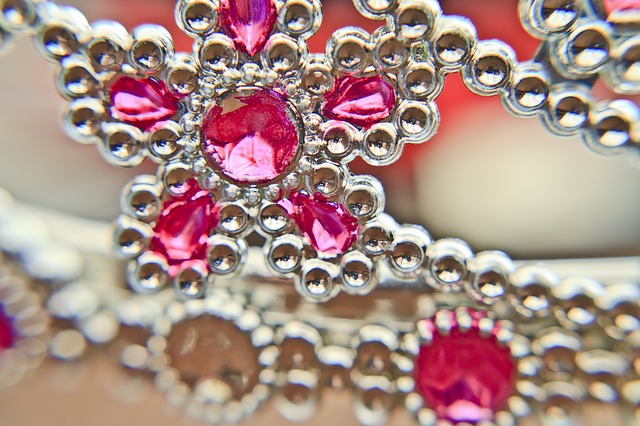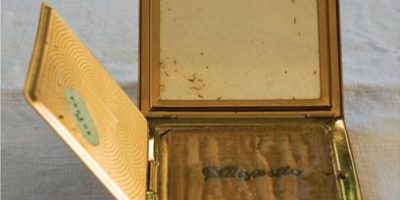
Only One of Us Can Wear This Dress, Ma
The year was 1956. My family lived in a public housing project in Astoria, Queens, a working-class melting pot fifteen minutes and a thousand miles from Manhattan. It took all week to get ready for the Purim celebration at our shul, an event that loomed large in my seven-year-old life. That year, Purim loomed large in our community’s life, too, as we’d just moved into our newly built synagogue and it was to be our first celebration. Many of the children’s fathers had been soldiers who’d fought against Hitler in Europe. Even I understood that Purim that year marked a victory against more than one Haman. My mother was making my costume, as she did most of my clothes. Adults used to tell me how lucky I was to have a mother who sewed clothes for me, but I silently really disagreed. My eyes would devour the windows of The Lerner Shop on Steinway Street, the major shopping area in our neighborhood. I longed for the garments that other girls obtained so easily, not having to stand still endlessly, as I did for fittings, not having to get pricked by pins.
I also envied other girls getting to choose their own clothes, as I ceded to my mother how I got portrayed to the world. By sewing my clothes, my mother — a willful person, to say the least — had one more means of making me her creation. On top of that, she never finished an outfit on time — never more than five minutes before I had to walk out the door — a circumstance that made me anxious and unhappy. Invariably I left our apartment in tears, yet the women who assembled on the benches outside our building never seemed to notice. Instead they would seize me as I got off the elevator, clucking in amazement over the breadth of my mother’s talent. Lifting the hem, they’d inspect the uniformity of my mother’s tiny stitches. Pulling my skirt up, they’d check to see whether she’d made underpants to match. At an early age, I felt that I knew what it was like to be a model; it was terrible.
The week before Purim that year, mom sewed and sewed whenever she wasn’t busy “keeping house.” In project mode, the floor was soon strewn with thread and pins and multicolored birds’ nests of selvage. When I arrived home from school each day, she would direct me to undress for a fitting.
As I stood and turned in the gown, my mother’s real agenda cranked up in earnest. “Have you decided who you’re going to be this year?” she asked, for the costume she had crafted — an A-line, floor-length gown of golden-yellow pique cotton with an exotic-looking bib-like trim — was for a generic queen: the exact queen I was going to be, either Esther or Vashti, was still open to question. My mother, who was trained in couture, believed that well-made garments should closely hug the body; she therefore spent lots of time fitting the gown to my round little body like a sausage skin.
“I’m going to be Queen Esther,” I said decidedly. Esther was, after all, the unrivaled heroine of the Purim story, and farand- away the most popular choice.
“Now why would you want to be Esther?” my mother started in. “All the girls will be Esther. Why do you think your grandparents came to this country, Laurie? For freedom of choice. So that you could be an individual. Don’t follow the pack. Think for yourself.”
I am thinking for myself, I silently reasoned — if I let you decide for me, Mom, where is the freedom in that?
“Why don’t you be Vashti?” she wheedled.
I girded myself for the struggle. I vehemently did not want to be Queen Vashti, King Ahashuerus’s first wife. In my mind, Vashti played a very minor role in a story that was really all about Esther’s beauty and bravery. My mother, though, argued in favor of Vashti’s strength of character; she argued on and on. I stood quietly, in a familiar, but precarious, position. Speaking my mind, I knew, would only beget more argument, and I needed my mother to finish the gown already, so that when Purim came we could get out the door. I smiled at her vaguely, and kept changing the subject.
Finally the big day came. I donned the costume, and my father adjusted the F stop on his camera, moving me around the room to get good light.
“You look like an Egyptian princess,” he said. “She looks gorgeous already,” he shouted to my mother. “Let’s go!”
We bustled out the door, my mother still straightening the seams that were leaving ridges in my chubby torso. The elevator was her last chance to work me.
“When it’s your turn at the microphone, Laurie, darling, don’t forget to say who you are. Loud and clear,” she said. “You want to stand out, not be one of the unthinking herd.”
I nodded, catching my father’s eye. Where my mother was concerned, we both knew how to make our lives easier.
We arrived at the spanking new synagogue, and I ascended the bimah — we were using it as a stage — and got in line next to Sharon Sumliner. We were both nervous and fidgety.
“You’re stepping on my scarf,” Sharon said.
“Sorry.” I looked at my foot, which was placed squarely on the trailing corner of her gauzy, mauve head-wrap.
From our perch on the bimah we could see the grownups looking ahead at us and then around at the sanctuary and then back at us. They were almost glowing. I sensed that what we were doing was important — being up there in America as we waited to take our turns, to walk across the stage, face the crowd and speak decisively into the microphone. Building the shul had been a big accomplishment for Jews living in public housing — bearing children in a safe land, carrying on our faith. Even I, at seven, felt the triumph.
The line thinned to me, I crossed the stage, and a lady held the microphone in front of me.
“And look who we have here! Laurie Deutsch, isn’t she beautiful? Now who are you dressed up to be?”
I smiled extra sweetly and locked eyes with my mother, my personal Haman.
“I’m Queen Esther,” I said loud and clear, “Malka Hadassah.”
My mother’s jaw dropped and then she beamed.
She had gotten her Vashti, and so had I.
Laurie Deutsch Mozian, author of Foods that Fight Disease, is a nutritionist living with her husband in Ulster County, New York.


